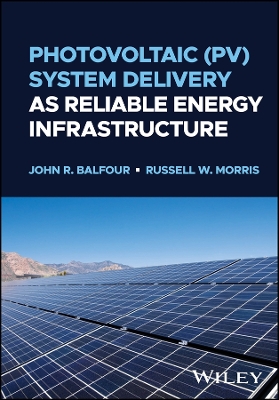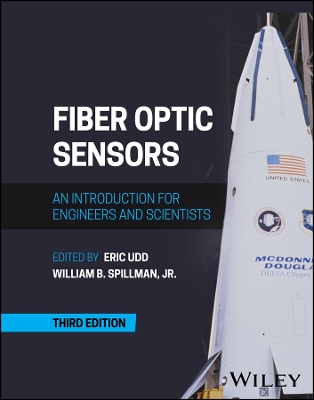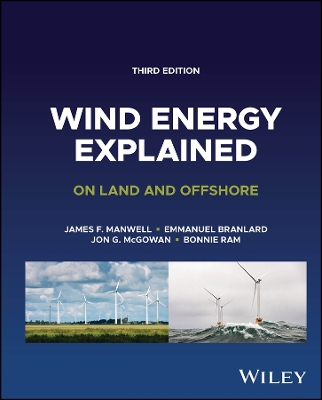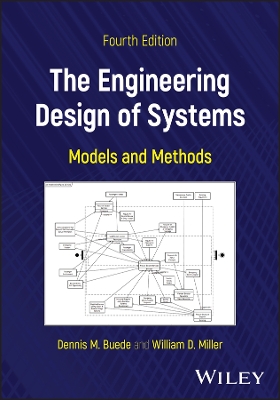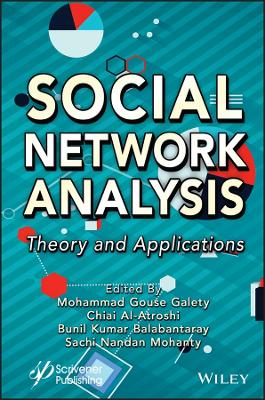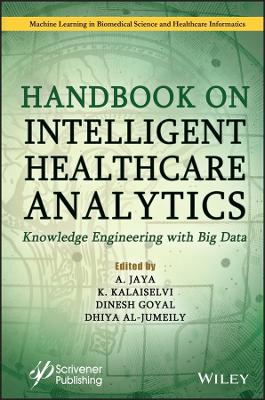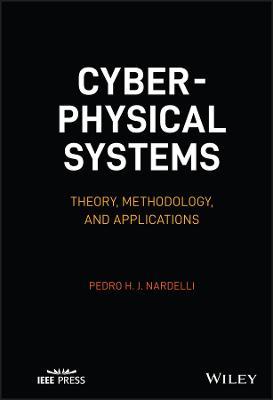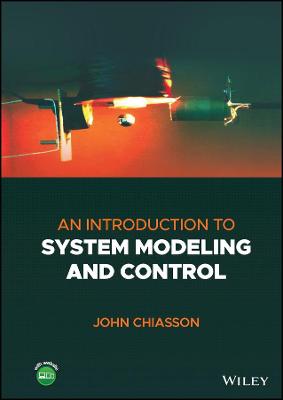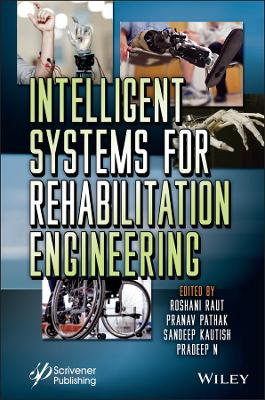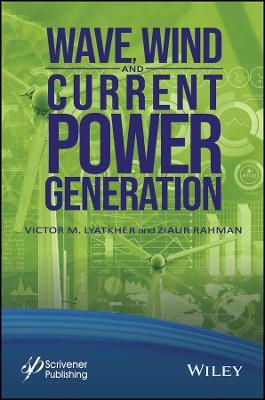Model Predictive Control
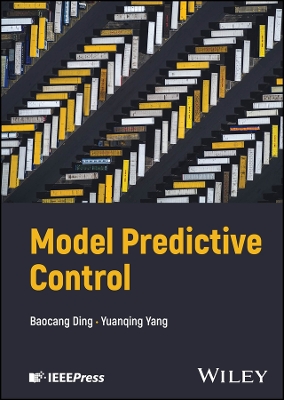 -10%
portes grátis
-10%
portes grátis
Model Predictive Control
Within a Two-Layered Framework
Yang, Yuanqing; Ding, Baocang
John Wiley & Sons Inc
05/2024
304
Dura
Inglês
9781119471394
Pré-lançamento - envio 15 a 20 dias após a sua edição
Preface xiii
Acronyms xv
Introduction xvii
1 Concepts 1
1.1 PID and Model Predictive Control 1
1.2 Two-Layered Model Predictive Control 4
1.3 Hierarchical Model Predictive Control 7
2 Parameter Estimation and Output Prediction 11
2.1 Test Signal for Model Identification 11
2.1.1 Step Test 11
2.1.2 White Noise 11
2.1.3 Pseudo-Random Binary Sequence 13
2.1.4 Generalized Binary Noise 14
2.2 Step Response Model Identification 15
2.2.1 Model 15
2.2.2 Data Processing 17
2.2.2.1 Marking or Interpolation of Bad Data 17
2.2.2.2 Smoothing Data 18
2.2.3 Model Identification 19
2.2.3.1 Case Grouping 19
2.2.3.2 Cased Data Preparation for Stable Dependent Variables 19
2.2.3.3 Cased Data Preparation for Integral Dependent Variables 21
2.2.3.4 Least Square Solution to Parameter Regression 22
2.2.3.5 Least Square Solution by SVD Decomposition 24
2.2.3.6 Filtering Pulse Response Coefficients 24
2.2.4 Numerical Example 27
2.3 Prediction Based on Step Response Model and Kalman Filter 30
2.3.1 Steady-State Kalman Filter and Predictor 31
2.3.2 Steady-State Kalman Filter and Predictor Based on Step Response Model 32
2.3.2.1 Open-Loop Prediction of Stable CV 33
2.3.2.2 Open-Loop Prediction of Integral CV 36
3 Steady-State Target Calculation 39
3.1 RTO and External Target 39
3.2 Economic Optimization and Target Tracking Problem 40
3.2.1 Economic Optimization 41
3.2.1.1 Optimization Problem 41
3.2.1.2 Minimum-Move Problem 42
3.2.2 Target Tracking Problem 46
3.3 Judging Feasibility and Adjusting Soft Constraint 46
3.3.1 Weight Method 47
3.3.1.1 An Illustrative Example 47
3.3.1.2 Weight Method 50
3.3.2 Priority-Rank Method 51
3.3.2.1 Ascending-Number Method 52
3.3.2.2 Descending-Number Method 52
3.3.3 Compromise Between Adjusting Soft Constraints and Economic Optimization 55
4 Two-Layered DMC for Stable Processes 57
4.1 Open-Loop Prediction Module 59
4.2 Steady-State Target Calculation Module 61
4.2.1 Hard and Soft Constraints 61
4.2.2 Priority Rank of Soft Constraints 63
4.2.3 Feasibility Stage 64
4.2.4 Economic Stage 66
4.3 Dynamic Calculation Module 67
4.4 Numerical Example 70
5 Two-Layered DMC for Stable and Integral Processes 73
5.1 Open-Loop Prediction Module 74
5.2 Steady-State Target Calculation Module 77
5.2.1 Hard and Soft Constraints 78
5.2.2 Priority Rank of Soft Constraints 80
5.2.3 Feasibility Stage 81
5.2.4 Economic Stage 83
5.3 Dynamic Calculation Module 85
5.4 Numerical Example 87
6 Two-Layered DMC for State-Space Model 95
6.1 Artificial Disturbance Model 95
6.1.1 Basic Model 96
6.1.2 Controlled Variable as Additional State 97
6.1.3 Manipulated Variable as Additional State 98
6.1.4 Kalman Filter 100
6.2 Open-Loop Prediction Module 103
6.3 Steady-State Target Calculation Module 104
6.3.1 Constraints on Steady-State Perturbation Increment 104
6.3.2 Feasibility Stage 106
6.3.3 Economic Stage Without Soft Constraint 107
6.4 Dynamic Calculation Module 108
6.5 Numerical Example 110
7 Offset-Free, Nonlinearity and Variable Structure in Two-Layered MPC 115
7.1 State Space Steady-State Target Calculation with Target Tracking 115
7.1.1 Case all External Targets Having Equal Importance 117
7.1.2 Case CV External Target Being More Important Than MV External Target 117
7.2 QP-Based Dynamic Control and Offset-Free 119
7.3 Static Nonlinear Transformation 125
7.3.1 Principle of Nonlinear Transformation 125
7.3.2 Usual Nonlinear Transformations 127
7.3.2.1 Nonlinear Transformation of Valve Output 127
7.3.2.2 Piecewise Linear Transformation 128
7.4 Two-Layered MPC with Varying Degree of Freedom 129
7.4.1 Numerical Example Without Varying Structure 130
7.4.2 Numerical Example with Varying Number of Manipulated Variables 131
7.5 Numerical Example with Output Collinearity 135
8 Two-Step Model Predictive Control for Hammerstein Model 141
8.1 Two-Step State Feedback MPC 142
8.2 Stability of Two-Step State Feedback MPC 144
8.3 Region of Attraction for Two-Step MPC: Semi-Global Stability 147
8.3.1 System Matrix Having No Eigenvalue Outside of Unit Circle 147
8.3.2 System Matrix Having Eigenvalues Outside of Unit Circle 149
8.3.3 Numerical Example 150
8.4 Two-Step Output Feedback Model Predictive Control 153
8.5 Generalized Predictive Control: Basics 159
8.5.1 Output Prediction 159
8.5.2 Receding Horizon Optimization 161
8.5.3 Dead-Beat Property of Generalized Predictive Control 164
8.5.4 On-line Identification and Feedback Correction 167
8.6 Two-Step Generalized Predictive Control 167
8.6.1 Unconstrained Algorithm 168
8.6.2 Algorithm with Input Saturation 168
8.6.3 Stability Results Based on Popov's Theorem 170
8.7 Region of Attraction for Two-Step Generalized Predictive Control 173
8.7.1 State Space Description 173
8.7.2 Stability with Region of Attraction 174
8.7.3 Computation of Region of Attraction 175
8.7.4 Numerical Example 177
9 Heuristic Model Predictive Control for LPV Model 179
9.1 A Heuristic Approach Based on Open-Loop Optimization 180
9.2 Open-Loop MPC for Unmeasurable State 186
10 Robust Model Predictive Control 195
10.1 A Cornerstone Method 195
10.1.1 KBM Formula 195
10.1.2 KBM Controller 197
10.1.3 Example: Generalizing to Networked Control 199
10.1.3.1 Closed-Loop Model for Double-Sided, Finite-Bounded, Arbitrary Packet Loss 199
10.1.3.2 MPC for Double-Sided, Arbitrary Packet Loss 200
10.1.3.3 Solution of MPC for Double-Sided Packet Loss 201
10.2 Invariant Set Trap 204
10.3 Prediction Horizon: Zero or One 211
10.3.1 One Over Zero 211
10.3.2 One: Generalizing to Networked Control 214
10.3.2.1 Algorithm 215
10.3.2.2 A Numerical Example 218
10.4 Variant Feedback MPC 219
10.5 About Optimality 226
10.5.1 Constrained Linear Time-Varying Quadratic Regulation with Near-Optimal Solution 227
10.5.1.1 Solving KBM Controller 228
10.5.1.2 Solving Problem Without Terminal Cost 229
10.5.1.3 Solving Problem with Terminal Cost 230
10.5.1.4 Overall Algorithm and Analysis 230
10.5.1.5 Numerical Example 231
10.5.2 Alternatives with Nominal Performance Cost 232
10.5.2.1 Problem Formulation 232
10.5.2.2 Robust MPC Based on Partial Feedback Control 233
10.5.2.3 Introducing Vertex Control Moves 235
10.5.2.4 Numerical Example 236
10.5.3 More Discussions 236
11 Output Feedback Robust Model Predictive Control 239
11.1 Model and Controller Descriptions 245
11.1.1 Controller for LPV Model 247
11.1.2 Controller for Quasi-LPV Model 248
11.2 Characterization of Stability and Optimality 249
11.2.1 Review of Quadratic Boundedness 249
11.2.2 Stability Condition 251
11.2.3 Optimality Condition 252
11.2.4 A Paradox for State Convergence 254
11.3 General Optimization Problem 255
11.3.1 Handling Physical Constraints 255
11.3.2 Current Augmented State 256
11.3.3 Some Usual Transformations 258
11.3.4 Handling Double Convex Combinations 259
11.4 Solutions to Output Feedback MPC 260
11.4.1 Full Online Method for LPV 261
11.4.2 Partial Online Method for LPV 262
11.4.3 Relaxed Variables in Optimization Problem 264
11.4.4 Alternative Forms Based on Congruence Transformation 265
11.4.5 Description of Bound on True State 271
References 273
Index 279
Preface xiii
Acronyms xv
Introduction xvii
1 Concepts 1
1.1 PID and Model Predictive Control 1
1.2 Two-Layered Model Predictive Control 4
1.3 Hierarchical Model Predictive Control 7
2 Parameter Estimation and Output Prediction 11
2.1 Test Signal for Model Identification 11
2.1.1 Step Test 11
2.1.2 White Noise 11
2.1.3 Pseudo-Random Binary Sequence 13
2.1.4 Generalized Binary Noise 14
2.2 Step Response Model Identification 15
2.2.1 Model 15
2.2.2 Data Processing 17
2.2.2.1 Marking or Interpolation of Bad Data 17
2.2.2.2 Smoothing Data 18
2.2.3 Model Identification 19
2.2.3.1 Case Grouping 19
2.2.3.2 Cased Data Preparation for Stable Dependent Variables 19
2.2.3.3 Cased Data Preparation for Integral Dependent Variables 21
2.2.3.4 Least Square Solution to Parameter Regression 22
2.2.3.5 Least Square Solution by SVD Decomposition 24
2.2.3.6 Filtering Pulse Response Coefficients 24
2.2.4 Numerical Example 27
2.3 Prediction Based on Step Response Model and Kalman Filter 30
2.3.1 Steady-State Kalman Filter and Predictor 31
2.3.2 Steady-State Kalman Filter and Predictor Based on Step Response Model 32
2.3.2.1 Open-Loop Prediction of Stable CV 33
2.3.2.2 Open-Loop Prediction of Integral CV 36
3 Steady-State Target Calculation 39
3.1 RTO and External Target 39
3.2 Economic Optimization and Target Tracking Problem 40
3.2.1 Economic Optimization 41
3.2.1.1 Optimization Problem 41
3.2.1.2 Minimum-Move Problem 42
3.2.2 Target Tracking Problem 46
3.3 Judging Feasibility and Adjusting Soft Constraint 46
3.3.1 Weight Method 47
3.3.1.1 An Illustrative Example 47
3.3.1.2 Weight Method 50
3.3.2 Priority-Rank Method 51
3.3.2.1 Ascending-Number Method 52
3.3.2.2 Descending-Number Method 52
3.3.3 Compromise Between Adjusting Soft Constraints and Economic Optimization 55
4 Two-Layered DMC for Stable Processes 57
4.1 Open-Loop Prediction Module 59
4.2 Steady-State Target Calculation Module 61
4.2.1 Hard and Soft Constraints 61
4.2.2 Priority Rank of Soft Constraints 63
4.2.3 Feasibility Stage 64
4.2.4 Economic Stage 66
4.3 Dynamic Calculation Module 67
4.4 Numerical Example 70
5 Two-Layered DMC for Stable and Integral Processes 73
5.1 Open-Loop Prediction Module 74
5.2 Steady-State Target Calculation Module 77
5.2.1 Hard and Soft Constraints 78
5.2.2 Priority Rank of Soft Constraints 80
5.2.3 Feasibility Stage 81
5.2.4 Economic Stage 83
5.3 Dynamic Calculation Module 85
5.4 Numerical Example 87
6 Two-Layered DMC for State-Space Model 95
6.1 Artificial Disturbance Model 95
6.1.1 Basic Model 96
6.1.2 Controlled Variable as Additional State 97
6.1.3 Manipulated Variable as Additional State 98
6.1.4 Kalman Filter 100
6.2 Open-Loop Prediction Module 103
6.3 Steady-State Target Calculation Module 104
6.3.1 Constraints on Steady-State Perturbation Increment 104
6.3.2 Feasibility Stage 106
6.3.3 Economic Stage Without Soft Constraint 107
6.4 Dynamic Calculation Module 108
6.5 Numerical Example 110
7 Offset-Free, Nonlinearity and Variable Structure in Two-Layered MPC 115
7.1 State Space Steady-State Target Calculation with Target Tracking 115
7.1.1 Case all External Targets Having Equal Importance 117
7.1.2 Case CV External Target Being More Important Than MV External Target 117
7.2 QP-Based Dynamic Control and Offset-Free 119
7.3 Static Nonlinear Transformation 125
7.3.1 Principle of Nonlinear Transformation 125
7.3.2 Usual Nonlinear Transformations 127
7.3.2.1 Nonlinear Transformation of Valve Output 127
7.3.2.2 Piecewise Linear Transformation 128
7.4 Two-Layered MPC with Varying Degree of Freedom 129
7.4.1 Numerical Example Without Varying Structure 130
7.4.2 Numerical Example with Varying Number of Manipulated Variables 131
7.5 Numerical Example with Output Collinearity 135
8 Two-Step Model Predictive Control for Hammerstein Model 141
8.1 Two-Step State Feedback MPC 142
8.2 Stability of Two-Step State Feedback MPC 144
8.3 Region of Attraction for Two-Step MPC: Semi-Global Stability 147
8.3.1 System Matrix Having No Eigenvalue Outside of Unit Circle 147
8.3.2 System Matrix Having Eigenvalues Outside of Unit Circle 149
8.3.3 Numerical Example 150
8.4 Two-Step Output Feedback Model Predictive Control 153
8.5 Generalized Predictive Control: Basics 159
8.5.1 Output Prediction 159
8.5.2 Receding Horizon Optimization 161
8.5.3 Dead-Beat Property of Generalized Predictive Control 164
8.5.4 On-line Identification and Feedback Correction 167
8.6 Two-Step Generalized Predictive Control 167
8.6.1 Unconstrained Algorithm 168
8.6.2 Algorithm with Input Saturation 168
8.6.3 Stability Results Based on Popov's Theorem 170
8.7 Region of Attraction for Two-Step Generalized Predictive Control 173
8.7.1 State Space Description 173
8.7.2 Stability with Region of Attraction 174
8.7.3 Computation of Region of Attraction 175
8.7.4 Numerical Example 177
9 Heuristic Model Predictive Control for LPV Model 179
9.1 A Heuristic Approach Based on Open-Loop Optimization 180
9.2 Open-Loop MPC for Unmeasurable State 186
10 Robust Model Predictive Control 195
10.1 A Cornerstone Method 195
10.1.1 KBM Formula 195
10.1.2 KBM Controller 197
10.1.3 Example: Generalizing to Networked Control 199
10.1.3.1 Closed-Loop Model for Double-Sided, Finite-Bounded, Arbitrary Packet Loss 199
10.1.3.2 MPC for Double-Sided, Arbitrary Packet Loss 200
10.1.3.3 Solution of MPC for Double-Sided Packet Loss 201
10.2 Invariant Set Trap 204
10.3 Prediction Horizon: Zero or One 211
10.3.1 One Over Zero 211
10.3.2 One: Generalizing to Networked Control 214
10.3.2.1 Algorithm 215
10.3.2.2 A Numerical Example 218
10.4 Variant Feedback MPC 219
10.5 About Optimality 226
10.5.1 Constrained Linear Time-Varying Quadratic Regulation with Near-Optimal Solution 227
10.5.1.1 Solving KBM Controller 228
10.5.1.2 Solving Problem Without Terminal Cost 229
10.5.1.3 Solving Problem with Terminal Cost 230
10.5.1.4 Overall Algorithm and Analysis 230
10.5.1.5 Numerical Example 231
10.5.2 Alternatives with Nominal Performance Cost 232
10.5.2.1 Problem Formulation 232
10.5.2.2 Robust MPC Based on Partial Feedback Control 233
10.5.2.3 Introducing Vertex Control Moves 235
10.5.2.4 Numerical Example 236
10.5.3 More Discussions 236
11 Output Feedback Robust Model Predictive Control 239
11.1 Model and Controller Descriptions 245
11.1.1 Controller for LPV Model 247
11.1.2 Controller for Quasi-LPV Model 248
11.2 Characterization of Stability and Optimality 249
11.2.1 Review of Quadratic Boundedness 249
11.2.2 Stability Condition 251
11.2.3 Optimality Condition 252
11.2.4 A Paradox for State Convergence 254
11.3 General Optimization Problem 255
11.3.1 Handling Physical Constraints 255
11.3.2 Current Augmented State 256
11.3.3 Some Usual Transformations 258
11.3.4 Handling Double Convex Combinations 259
11.4 Solutions to Output Feedback MPC 260
11.4.1 Full Online Method for LPV 261
11.4.2 Partial Online Method for LPV 262
11.4.3 Relaxed Variables in Optimization Problem 264
11.4.4 Alternative Forms Based on Congruence Transformation 265
11.4.5 Description of Bound on True State 271
References 273
Index 279

